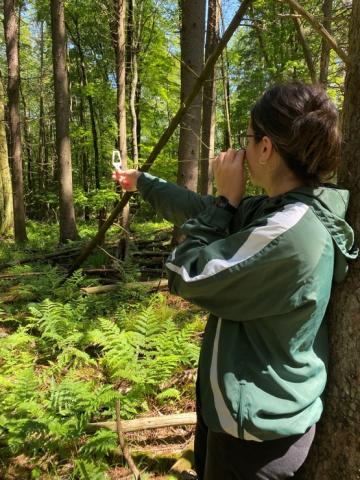Wildlife in the WUI: Investigating Forest Characteristics and Impacts on Mammalian Diversity in the Wildland-Urban Interface

Across the United States, housing development in forests has created a vast and rapidly expanding wildland-urban interface (WUI), where housing is intermixed with or adjacent to forests. As of 2010, 28% of forest in the Northern Forest region was found in these areas, with 8% of the region’s forest becoming WUI since 1990, a 40% increase in the amount of forest in WUI in those two decades. Housing development pressure will likely continue and may accelerate due to relocation to rural areas in response to COVID-19. It is important to learn from past trends to understand how future decisions will impact the region’s biological diversity.
NSRC researchers will develop methods to inform land use policies and practices, identify opportunities to conserve wildlife diversity, and anticipate human-wildlife interactions. Researchers will compare forest structure and composition inside and outside the WUI across the Northern Forest landscape. They will quantify impacts of housing development on forest stand diversity, biomass, regeneration, standing dead trees, and downed woody material, with implications for wildlife habitat suitability. They will then investigate impacts of the WUI on diversity, distribution and behavior of mammals such as fisher, coyote, red and gray fox, white-tailed deer, and small species. They will generate a model to select field study sites for non-invasive camera traps, live-capture/recapture of small mammals, and vegetation sampling.
This study aims to better understand the state of the Northern Forest and measure impacts from housing development on native biological diversity. The findings will provide new information to guide decision makers when updating open space planning while balancing sustainable housing development.
